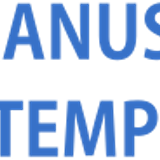Thru Tubing Fracturing Experience in Tight Sand Reservoir, Offshore North West Java.
Abstract
Lately, hydraulic Fracturing become common stimulation to improve economic by increase production and adding reserve through unconventional play from tight sand reservoir. The fracturing treatment creates highly conductive pathway to enhance production and well drainage which lead to add reserves. Mostly, Hydraulic Fracturing treatment had been performing in new development wells of infill wells. After successful resulted hydraulic fracturing campaign in new infill wells, there was a trial to perform hydraulic fracturing in existing well thru existing tubing completion. First well which was selected as first to perform remedial frac, thru tubing hydraulic fracturing is consider as a cheaper way to perform rigless hydraulic fracturing compare to hydraulic fracturing with rig. The main challenges during operational come from limitation of existing completion, several adjustment in design and operational should be perform to optimization during fracturing job. This paper presents the experience including fracturing limitation and fracturing design during performing first thru tubing hydraulic fracturing in tight sand reservoir in Offshore North West Java.
Keywords
Full Text:
PDFReferences
King, G. E., 2013. Well Integrity: Hydraulic Fracturing and Well Construction – What Are the Factual Risks?. Dallas: SPE.org.
Lee, W. J., 2014. Workflow for Applying Simple Models to Forecast Production from Hydraulically Fractured Shale Wells. USA: SPE.org.
Susilo, Y., Wibowo, W., Rich, D. & Priyandoko, P., 2001. New Technique to Recover By-passed Reserves Above Packer Reduces the Completion Cost and Maximizes the Well Production in ONWJ Field, Indonesia. Kuala Lumpur, Malaysia, Society of Petroleum Engineers.
Yoliandri , S., Wibowo, W., Dewi, D. P. & Dwibhakti, K., 2002. Slimhole Completion Experience in Java Sea, Indonesia: A Look Back on Performance of the Frist 40 Slimholes Wells. Melbourne, Australia, Society of Petroleum Engineers.
DOI: https://doi.org/10.29017/SCOG.43.1.393

This work is licensed under a Creative Commons Attribution-NonCommercial-NoDerivatives 4.0 International License.






